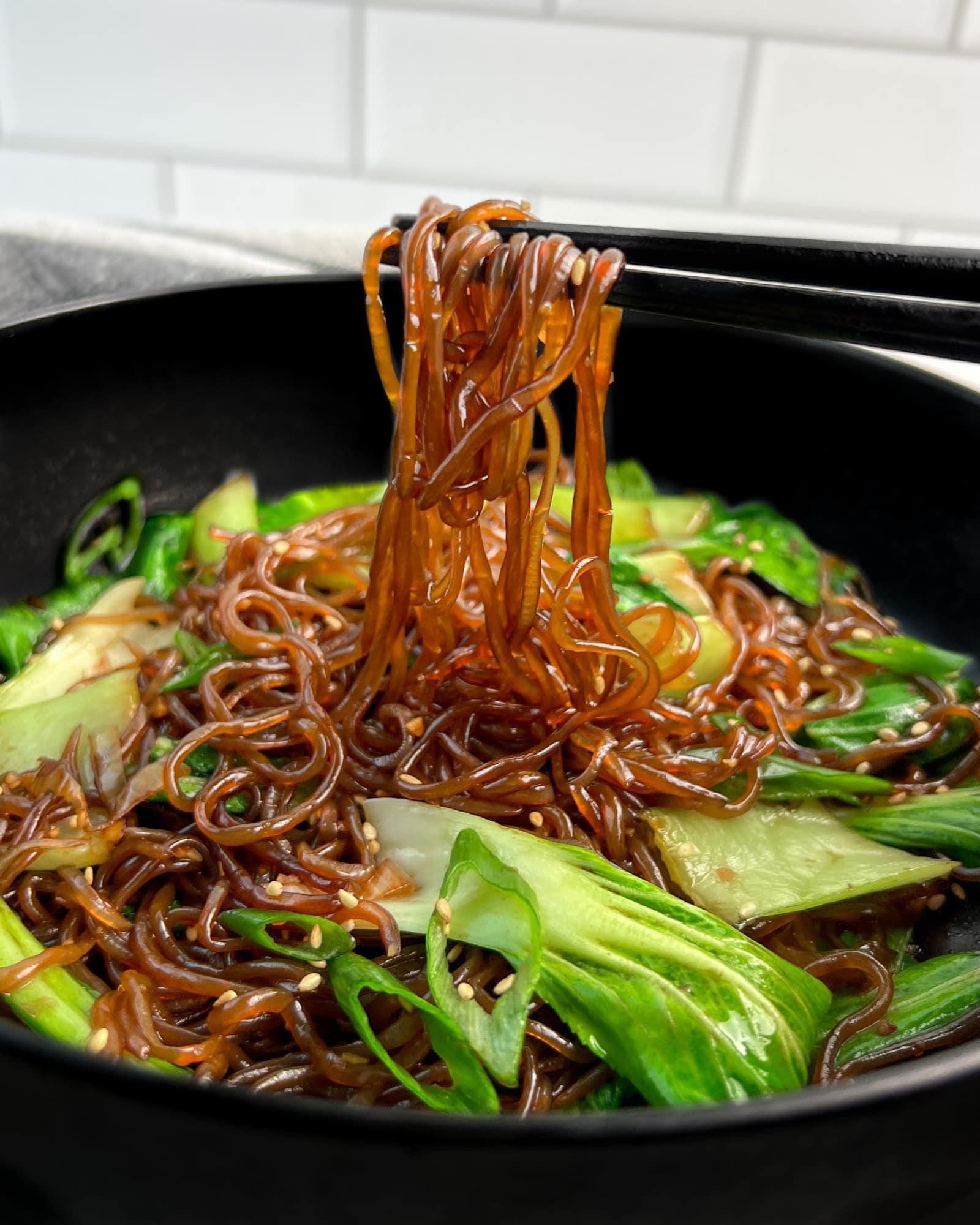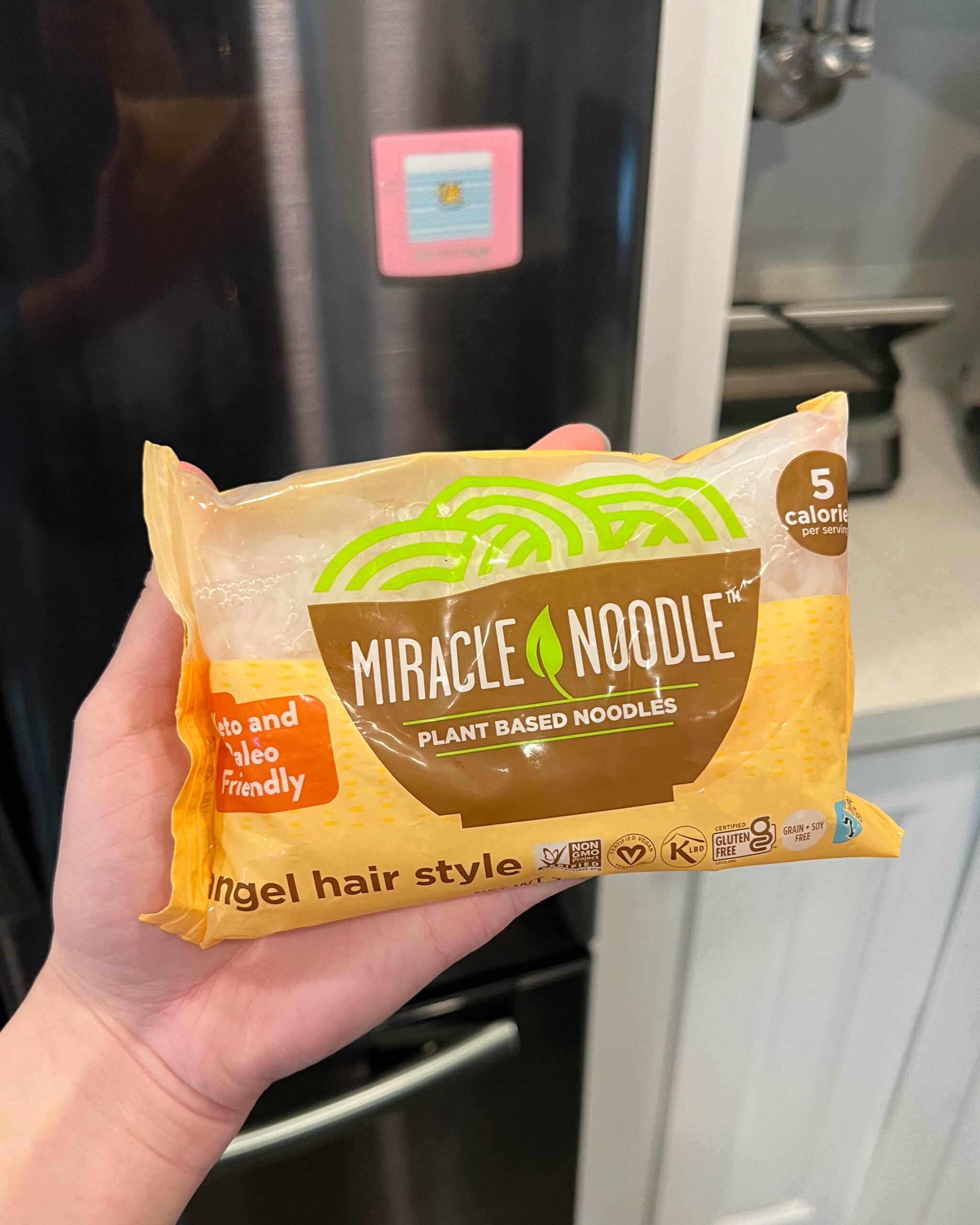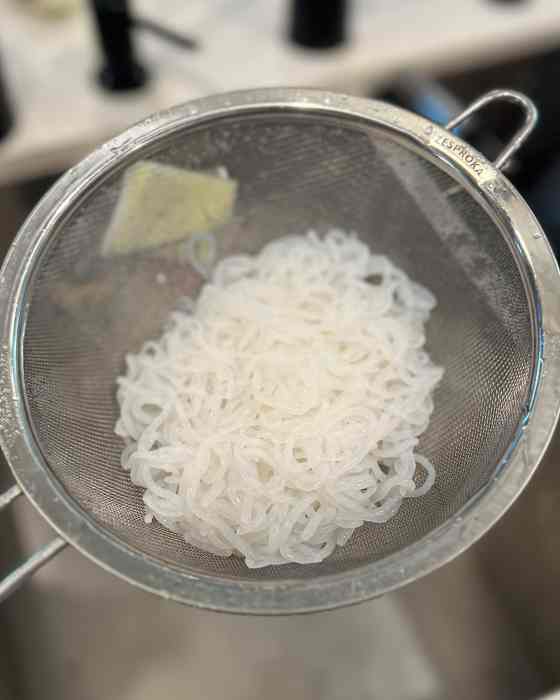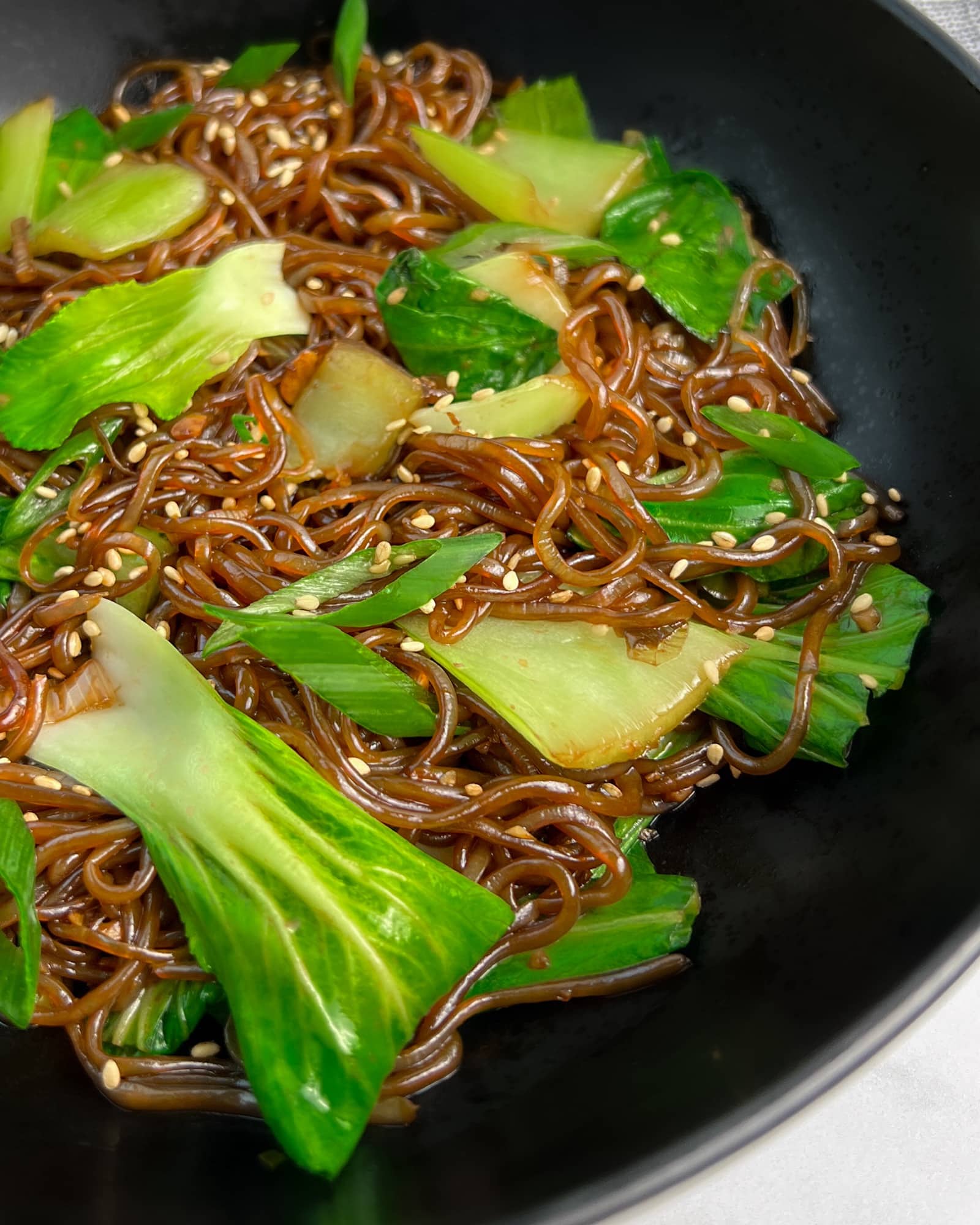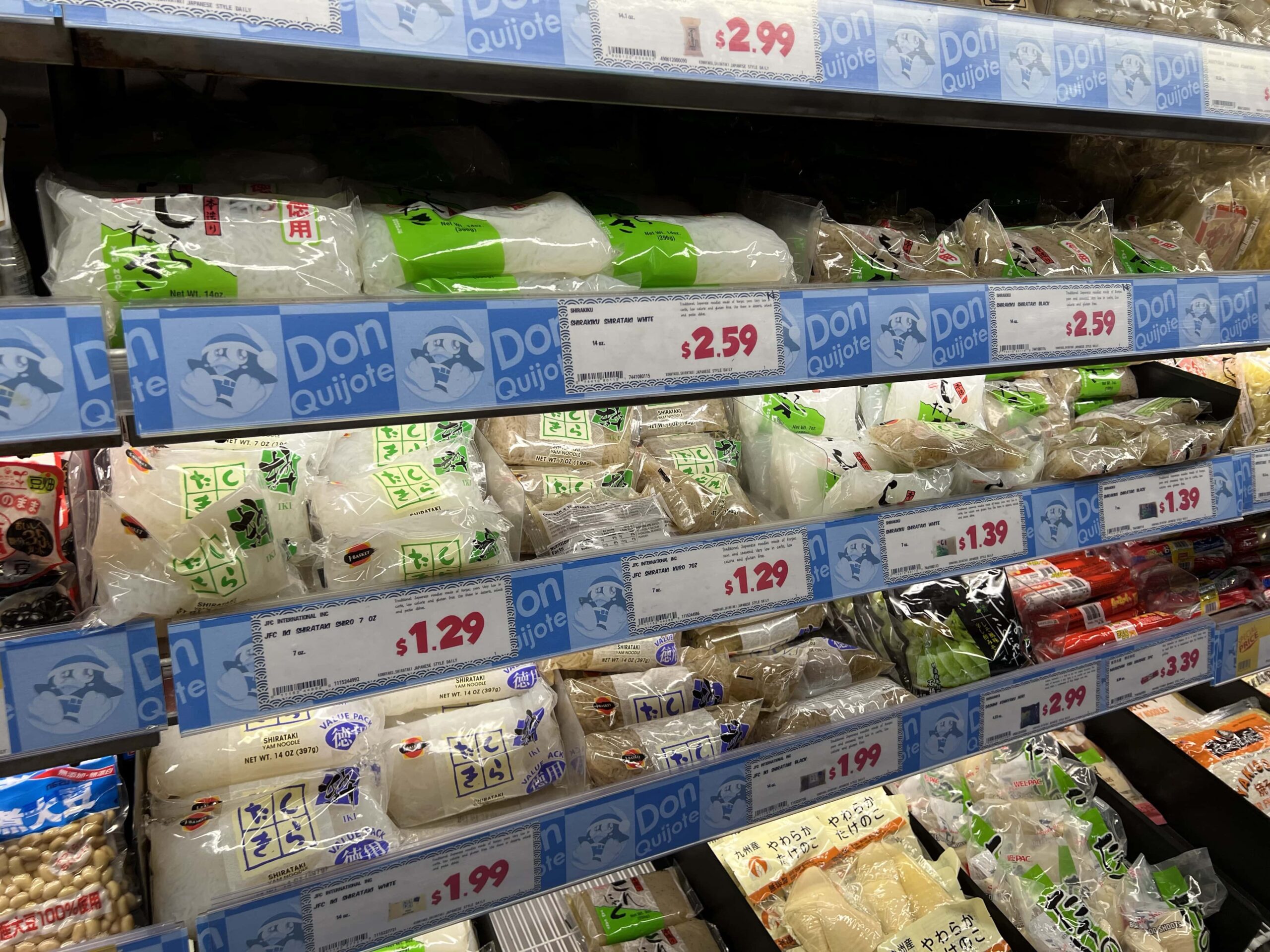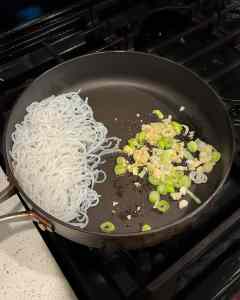A Light and Satisfying Meal
When I first discovered shirataki noodles, I was amazed by how light yet filling they were. Made from konjac, these translucent noodles soak up flavors beautifully, making them a fantastic base for a quick and easy stir-fried dish. I love tossing them with crisp baby bok choy and a simple stir fry sauce for a delicious meal that feels both indulgent and nutritious.
With an incredibly low calorie count, an entire batch of this dish can be enjoyed guilt-free, whether as a quick lunch or a satisfying snack between meals. The texture is unique—chewy yet soft—and when paired with the right ingredients, it becomes a truly hearty and enjoyable dish.
For those focused on dieting or trying to lose weight, this recipe is a perfect option, but balance is key. While this dish is low in calories, extreme calorie restriction can be dangerous, so it’s best paired with other nourishing meals throughout the day.
I’ve probably never eaten a dish this flavorful with such a low calorie count, making it an excellent choice for anyone looking to enjoy food without overindulging. The simplicity of this meal is what makes it so fantastic—minimal ingredients, maximum taste, and a dish that’s meant to be both comforting and nutritious.

About Shirataki Noodles
Shirataki noodles have been a staple in Japanese cooking for a long time, made from konjac yam and nearly calorie-free! A standard package of these translucent noodles contains as little as 10 calories, depending on the brand. What makes them unique is that our bodies struggle to digest them, allowing them to pass through the system much like dietary fiber. This is why they are an excellent low-calorie option for those looking for lighter meals without compromising on satisfaction.
While they’ve been part of traditional Japanese cuisine for years, they have been recently gaining popularity in western kitchens. My favorite way to prepare them is in a stir fry, but they also work wonderfully in soups. Their ability to absorb flavors makes them incredibly versatile, adding texture and depth to a variety of dishes. Whether you’re new to these noodles or a long-time fan, they’re a fantastic addition to any meal plan.


What do shirataki noodles taste like?
Shirataki noodles are almost completely flavorless, meaning they absorb the taste of whatever sauce you prepare them in. Some brands of konjac noodles may have a slight fishy smell when taken out of the package, but this disappears with proper rinsing and cooking. The Miracle Noodle brand has little to no odor, making it a great choice.
How is the texture of shirataki noodles?
The texture of shirataki noodles is quite firm, and unlike regular pasta, they do not break apart easily when chewed. Some people prefer to snip them into smaller pieces using kitchen shears before serving to make them easier to eat.
How much do shirataki noodles cost? Where can I buy them?
Popular name brands like Miracle Noodle and Pasta Zero are available in grocery stores across the US, usually priced at $3-$4 per 7 oz package. You can find them in the pasta aisle, Asian foods aisle, or the refrigerated section near the tofu. While most shirataki noodles don’t require refrigeration, they keep better when stored at home in the fridge.
The best deals are at Japanese markets or Asian markets, where they are often stocked for around $1.50 per 7 oz—less than half the price of American brands. If you can’t find them locally, they can be shipped easily. Multipacks are available on Amazon, such as a 6 pack of Miracle Noodles for $26 (about $4.30 per pack).

Are Shirataki Noodles Safe and Keto-Friendly?
When it comes to risks, shirataki noodles have almost no nutritional value, meaning that eating them is like consuming nothing at all. They should never be your primary food for the day, as they lack essential nutrients. However, as long as you get enough calories from other sources, konjac noodles can be a great addition to a well-balanced diet and may even help you lose weight.
Since they remain intact as they pass through the system, some experts suggest chewing them thoroughly to aid digestion. Additionally, some people report stomach pain or issues after consuming large quantities, so if you’re new to them, start with a small serving to see how your body may react.
For those on a keto diet, shirataki noodles are completely keto friendly! While this recipe includes brown sugar, you can easily omit it to keep the dish low in carbs. In traditional Japanese cooking, these noodles are most prevalent in soups like oden and hot pot, including sukiyaki and shabu shabu. Their ability to soak up flavors makes them a delicious addition to both classic and modern dishes.

Key Tips – Stir Fry Shirataki Noodles
Substituting Other Veggies
This recipe is highly adaptable, so feel free to sub in any stir-fry veggies you have on hand. Some great options include broccoli, shredded cabbage, and snow peas. If you’re adding a lot of vegetables, consider increasing the quantity of sauce to keep the flavors balanced.
Making a Double Batch
If desired, this recipe can easily be doubled to make a double batch. Just keep in mind that you may need to increase the cooking times slightly to ensure everything is cooked through.
Adding Some Spice
Want to make it spicy? You can enhance the spice level by topping the dish with red pepper flakes or, even better, adding them along with garlic while cooking for deeper flavor.
Check out my guide on freezing fresh garlic to save some time in the kitchen.
- If you’re looking for the convenience of pre-minced garlic, but the flavor of fresh garlic, freezing your own minced garlic is a great option! You’ll be surprised to find that the flavor of frozen garlic is nearly as good as fresh, without the sticky prep and clean-up.
Dietary Restrictions – Stir Fry Shirataki Noodles
This dish is naturally Vegan & Vegetarian.
This dish is naturally Dairy-Free.
Make it Gluten-Free:
- Just make sure you’re using gluten-free soy sauce, such as tamari.
A Note On Serving Sizes
Serving sizes are very personal, and that makes it difficult for me to select a serving size that suits everyone. For this recipe, I’ve listed a “serving” as one batch, which is made from one standard package of shirataki noodles.
STIR FRY SHIRATAKI NOODLES
Ingredients
- 1 (7-8 oz) pack shirataki noodles (e.g., Miracle Noodles, or Pasta Zero)
- 1 baby bok choy
- 1 green onion
- 1 teaspoon freshly minced garlic
- ½ tablespoon toasted sesame oil
- 2 tablespoons soy sauce (for darker color, add 1 teaspoon dark soy sauce)
- 1 teaspoon light brown sugar
- 1 teaspoon unseasoned rice vinegar (optional)
- Toasted sesame seeds (optional, for topping)
- MSG (optional)

Instructions
- Prepare Vegetables:
Separate the leaves of the baby bok choy and thoroughly clean them. Chop into bite-sized pieces, separating the white and green portions. Thinly slice the green onion, separating the whites and greens.

- Cook Shirataki Noodles:
Set a pan over medium heat. Drain the shirataki noodles into a mesh strainer or colander and thoroughly rinse under cool water. Add the noodles directly to the empty pan and cook, tossing occasionally, until all the water has evaporated, about 5 minutes.
- Sauté Garlic and Onions:
Push the noodles to one side of the pan. On the other side, add the sesame oil, garlic, and the whites of the green onions. Cook, stirring frequently, until fragrant, about 1-2 minutes.

- Add Bok Choy and Sauce:
Add the whites of the baby bok choy, soy sauce, brown sugar, and rice vinegar (optional). Mix everything together and cook, stirring frequently, until most of the liquid has evaporated, about 3 minutes. Season with MSG if desired.
- Cook Greens and Serve:
Add the green portion of the baby bok choy to the pan and cook for one more minute until they are just starting to wilt. Remove from heat and transfer to a plate or bowl. Top with sesame seeds and the green part of the green onions.
Notes
- This recipe can be easily doubled, but cook times may need to increase slightly.
- The best prices for shirataki noodles can be found at Asian grocery stores.
- For a darker color like the photos, add in 1 teaspoon of dark soy sauce per batch.
Nutrition
- Serving Size: 1 batch
- Calories: 110 kcal
